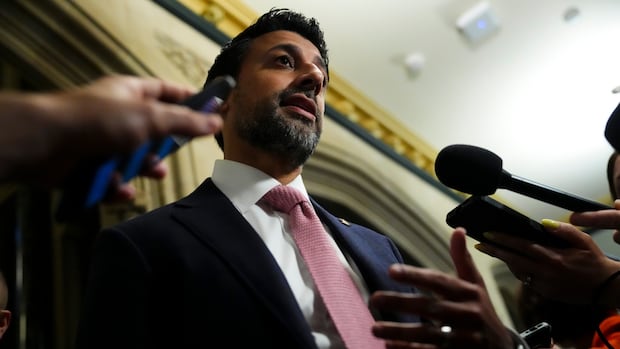In an ambitious pivot that signals a strategic realignment of Canada’s global trade priorities, International Trade Minister Maninder Sidhu announced yesterday a comprehensive plan to diversify Canada’s trade relationships beyond traditional markets. The initiative, unveiled during a ministerial address in Ottawa, represents Ottawa’s most concerted effort in decades to reduce economic dependence on the United States and China while cultivating deeper commercial ties with emerging economies across Asia, Africa, and Latin America.
“The global economic landscape is undergoing a fundamental transformation,” Minister Sidhu told a room of business leaders and diplomats. “Canada must position itself at the forefront of these changes or risk being left behind in an increasingly competitive marketplace.”
The strategy includes a substantial $160 million allocation over five years to support Canadian businesses venturing into new markets, with particular emphasis on sustainable industries, clean technology, artificial intelligence, and advanced manufacturing sectors where Canadian expertise already commands international respect.
What distinguishes this approach from previous trade diversification attempts is its targeted focus on specific high-growth regions. Southeast Asian economies like Vietnam, Indonesia, and Malaysia feature prominently, alongside emerging African markets including Kenya, Nigeria, and South Africa. In Latin America, the government has identified Chile, Colombia, and Peru as priority partners for expanded commercial relationships.
Trade analysts note this shift comes at a critical juncture. “With protectionist sentiments rising in the United States and continuing tensions with China, Canada’s economic resilience depends on developing multiple trade channels,” explains Dr. Elizabeth Thornton, senior fellow at the Canadian Global Affairs Institute. “This isn’t just about risk management—it’s about capturing opportunities in rapidly growing economies that will shape the 21st century global marketplace.”
The strategy also addresses long-standing criticisms that Canada’s trade promotion infrastructure has lagged behind international competitors. New specialized trade commissioners will be deployed to target markets, supplemented by enhanced digital tools to help Canadian exporters navigate foreign regulatory environments and connect with potential partners abroad.
“We’re essentially rebuilding our commercial diplomacy from the ground up,” a senior official from Global Affairs Canada confirmed on background. “The level of support we’ll be providing to businesses, especially small and medium enterprises, represents a quantum leap from previous approaches.”
Business community reception has been cautiously optimistic. The Canadian Chamber of Commerce praised the initiative’s ambition while emphasizing implementation will determine its success. Indigenous business leaders have also welcomed provisions specifically designed to increase Aboriginal enterprise participation in international trade.
This diversification push parallels similar efforts by Australia, the United Kingdom, and European Union nations seeking to recalibrate their economic relationships amid shifting geopolitical realities. However, Canadian political analysts note the strategy faces domestic challenges, including provincial jurisdictional concerns and industry-specific adjustment costs.
“The federal government can’t simply mandate diversification,” notes political economist Jasmine Wong of Carleton University. “Success requires sustained coordination with provincial governments, industry associations, and educational institutions to build the language skills, cultural knowledge, and market intelligence needed to thrive in these new environments.”
Minister Sidhu acknowledged these challenges, emphasizing the strategy includes provisions for enhanced federal-provincial cooperation and sector-specific transition assistance. The plan also integrates Canada’s broader foreign policy objectives, particularly in advancing democratic values, environmental sustainability, and labor standards through trade relationships.
“This is not merely about selling more Canadian goods and services abroad,” Sidhu emphasized. “It’s about ensuring Canada’s economic interests align with our values in shaping a more sustainable and equitable global economy.”
As the implementation phase begins, the central question remains: can Canada successfully execute this ambitious vision in time to mitigate emerging risks and capitalize on shifting global economic dynamics? Or will this initiative join previous diversification attempts that delivered more promise than results?























